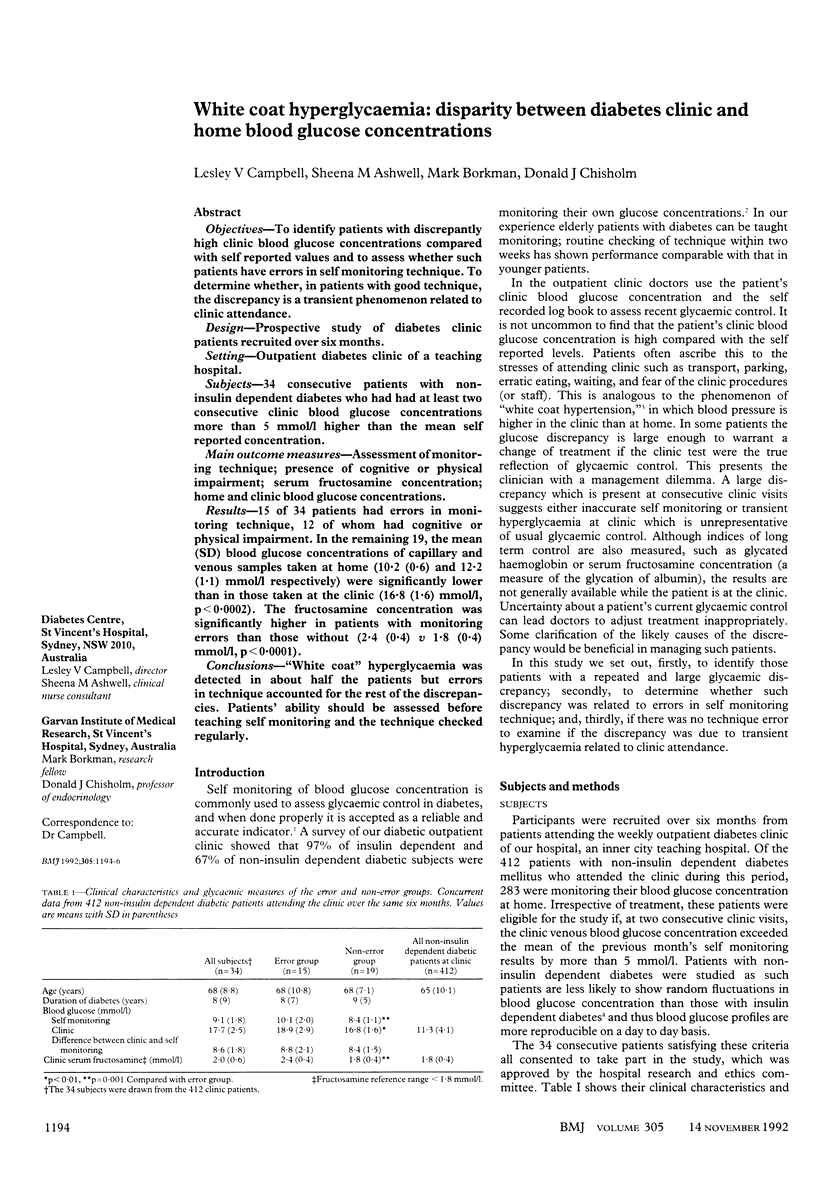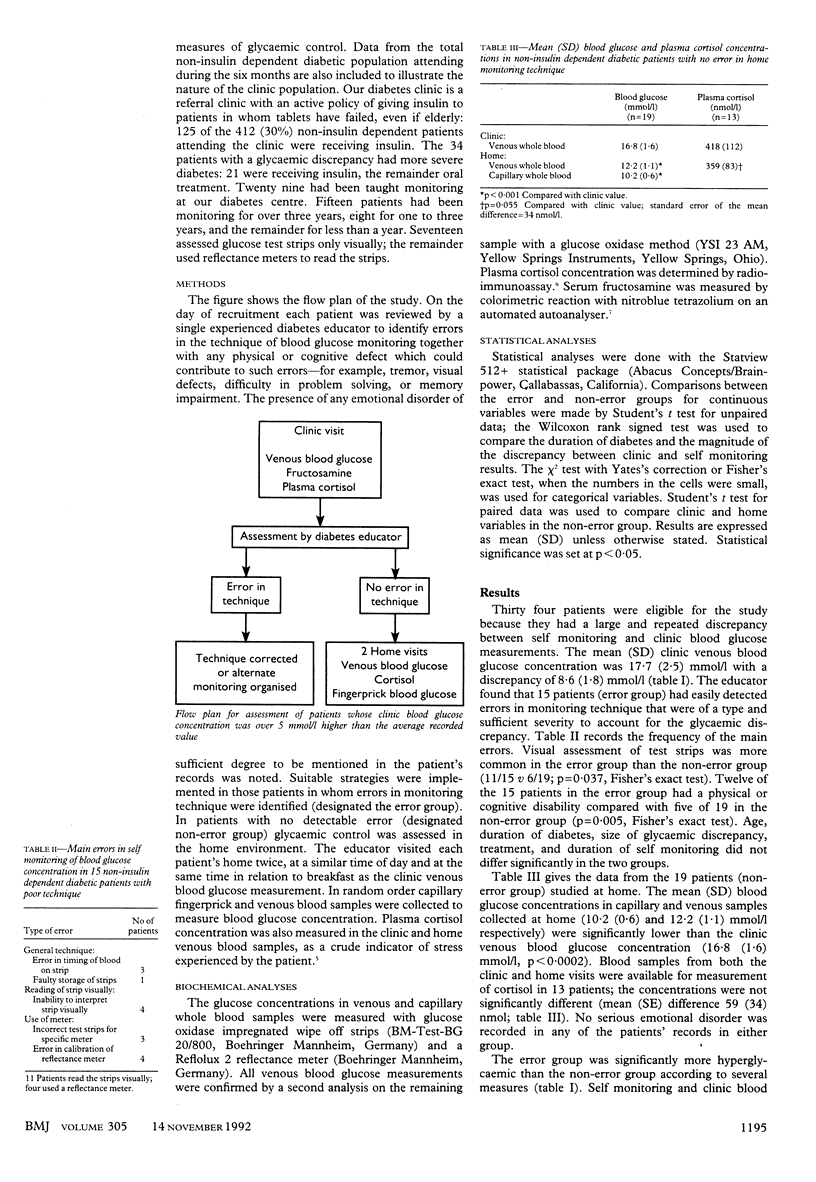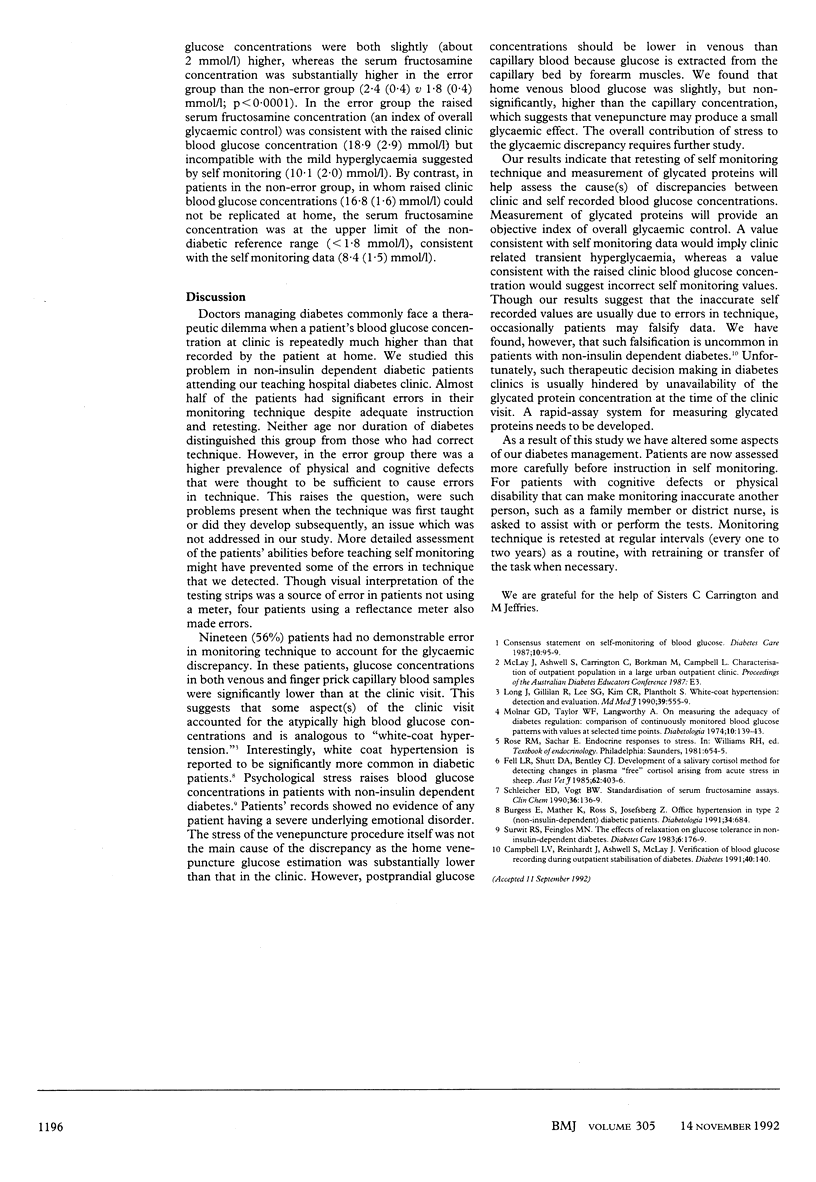Abstract
OBJECTIVES--To identify patients with discrepantly high clinic blood glucose concentrations compared with self reported values and to assess whether such patients have errors in self monitoring technique. To determine whether, in patients with good technique, the discrepancy is a transient phenomenon related to clinic attendance. DESIGN--Prospective study of diabetes clinic patients recruited over six months. SETTING--Outpatient diabetes clinic of a teaching hospital. SUBJECTS--34 consecutive patients with non-insulin dependent diabetes who had had at least two consecutive clinic blood glucose concentrations more than 5 mmol/l higher than the mean self reported concentration. MAIN OUTCOME MEASURES--Assessment of monitoring technique; presence of cognitive or physical impairment; serum fructosamine concentration; home and clinic blood glucose concentrations. RESULTS--15 of 34 patients had errors in monitoring technique, 12 of whom had cognitive or physical impairment. In the remaining 19, the mean (SD) blood glucose concentrations of capillary and venous samples taken at home (10.2 (0.6) and 12.2 (1.1) mmol/l respectively) were significantly lower than in those taken at the clinic (16.8 (1.6) mmol/l, p < 0.0002). The fructosamine concentration was significantly higher in patients with monitoring errors than those without (2.4 (0.4) v 1.8 (0.4) mmol/l, p < 0.0001). CONCLUSIONS--"White coat" hyperglycaemia was detected in about half the patients but errors in technique accounted for the rest of the discrepancies. Patients' ability should be assessed before teaching self monitoring and the technique checked regularly.
Full text
PDF


Selected References
These references are in PubMed. This may not be the complete list of references from this article.
- Burgess E., Mather K., Ross S., Josefsberg Z. Office hypertension in type 2 (non-insulin-dependent) diabetic patients. Diabetologia. 1991 Sep;34(9):684–684. doi: 10.1007/BF00401000. [DOI] [PubMed] [Google Scholar]
- Fell L. R., Shutt D. A., Bentley C. J. Development of a salivary cortisol method for detecting changes in plasma "free" cortisol arising from acute stress in sheep. Aust Vet J. 1985 Dec;62(12):403–406. doi: 10.1111/j.1751-0813.1985.tb14120.x. [DOI] [PubMed] [Google Scholar]
- Long J., Gillilan R., Lee S. G., Kim C. R., Plantholt S. White-coat hypertension: detection and evaluation. Md Med J. 1990 Jun;39(6):555–559. [PubMed] [Google Scholar]
- Schleicher E. D., Vogt B. W. Standardization of serum fructosamine assays. Clin Chem. 1990 Jan;36(1):136–139. [PubMed] [Google Scholar]
- Surwit R. S., Feinglos M. N. The effects of relaxations on glucose tolerance in non-insulin-dependent diabetes. Diabetes Care. 1983 Mar-Apr;6(2):176–179. doi: 10.2337/diacare.6.2.176. [DOI] [PubMed] [Google Scholar]


